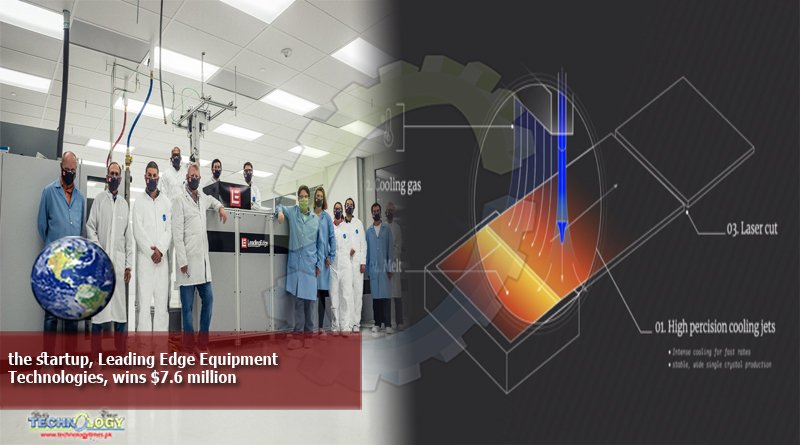Leading Edge Equipment Technologies falls in the kerfless solar wafer or direct solar wafer category. According to the company, its “drop-in” manufacturing technology reduces wafer costs by 50%, increases commercial solar panel power by up to 7%, and reduces manufacturing emissions by over 50%. It’s the emissions piece that might be winning over investors.

Leading Edge Equipment Technologies, a startup making manufacturing equipment to produce kerfless, single-crystal silicon wafers for solar panels, just closed on a $7.6 million series A financing. The round was led by Prime Impact Fund, Clean Energy Ventures along with DSM Venturing. Previous investors in the startup include Applied Materials, Clean Energy Venture Group and David Buzby.
The company’s technology falls in the kerfless wafer or direct-wafer category. Kerfless production does not require silicon ingots to be sawn into wafers, a time- and energy-consuming multi-step process which uses consumables and wastes material as silicon dust.
According to the company, its “drop-in” manufacturing technology reduces wafer costs by 50%, increases commercial solar panel power by up to 7%, and reduces manufacturing emissions by over 50%.
Rick Schwerdtfeger joined Leading Edge as CEO and Nathan Stoddard joined as CTO earlier this year. Prior to this funding round, the startup received $1.45 million in angel and venture funding, according to Pitchbook, and has received $4 million in DOE funding. Founder and board member Alison Greenlee, with previous experience at kerfless silicon wafer startup 1366 Technologies, is chief product officer.
The company’s product is a new type of silicon wafer production furnace.
CEO Rick Schwerdtfeger told pv magazine, “The furnace is actually producing a single crystal — basically a one-wafer-wide ribbon that comes out of the furnace, and then is laser cut at the furnace into sections, and those sections can be further laser-cut or cleaved into net shape wafers with no need for diamond sawing and saw damage removal etching — and no need for the traditional cropping and all the challenges of taking a very large CZ boule and turning it into thin wafers. We grow basically a net shape wafer coming out of the furnace.”
The “Floating Silicon Method” process was pioneered by Leading Edge founder Peter Kellerman while at Varian Semiconductor, which was later acquired by Applied Materials for $4.9 billion back in 2011.
Schwerdtfeger, the CEO, said the “dirty little secret” of solar power was the energy intensity and emissions in the purification and forming of the silicon materials. He said, “Our process wastes virtually no silicon — and that has a major impact on factory emissions.”
That emissions component cited by the startup is of increasing importance to investors with an ESG thesis and one that the Ultra Low-Carbon Solar Alliance is attempting to address. The alliance looks to grow market awareness around solar supply chain decarbonization.
Other startups have gone down the kerfless road and met with limited success. Twin Creeks and SiGen attempted to manufacture kerfless silicon using ion-implantation. Crystal Solar and Ampulse were working gas-to-wafer technology. Evergreen Solar was a publicly-listed ribbon solar company. These firms are defunct.
1366 Technologies is still alive and forming wafers directly using molten silicon.
Leading Edge’s customers are the solar module incumbents and perhaps some hungry upstarts challenging those incumbents. The startup CEO said he looks to have “furnaces into the field by late next year.”
Originally published at Magazine
